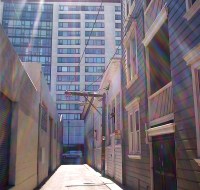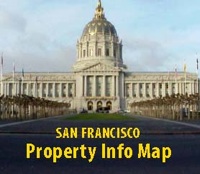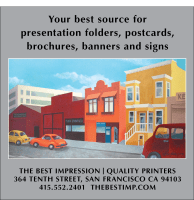One of the best ways to protect life on the alleys is to limit the amount of traffic on them. The Western SoMa Citizens Planning Task Force memorialized this thinking in the Western SoMa Community Plan with the following two objectives relating to alleys:
OBJECTIVE 4.1
Facilitate the movement of pedestrians and bicycles in the alleys
OBJECTIVE 4.2
Limit the speed and volume of motor vehicles in alleys
Unfortunately, the San Francisco Planning Department appears to be ignoring our community’s agreed upon planning objectives for alleys by making it a policy to prefer vehicular traffic to enter new development projects from the alleys, even when the site abuts one of the major neighborhood serving streets.
This is what is happening at 9th and Howard Streets (Mario Andretti gas station). The Natoma alley neighbors have made it very clear that the driveway for approximately 90 cars should enter and exit onto Howard Street. The Natoma alley is a narrow (approximately 35’) one-way alley as it spans from 9th to 8th streets with the Canon Kip Community House for 104 formerly homeless, primarily disabled seniors in SRO units on the corner of 8th and Natoma (705 Natoma) and the Community House provides a 7-day per week senior community center for activities.
This segment of the Natoma alley is currently congested with both business and residential users. A driveway for the approximately 90 cars on Howard Street would let the traffic disburse in many directions, whereas the Natoma alley exit would create many more trips for drivers to go north or west.
The only downside is the potential conflict with a bicycle lane, but the traffic planners have planned a bicycle traffic light and stacking space to minimize the conflict.
It seems much more dangerous to funnel more traffic onto Natoma alley and diminish the pedestrian safety intended for the alleys of SoMa than to have cars enter and exist onto Howard Street. With primarily disabled seniors in very small SRO units at the end of this block of Natoma alley, it would seem Vision Zero policies would prioritize the safety of pedestrians even more than other streets that do not have 104 formerly homeless, primarily disabled seniors trying to get some breathing room outside of the building on the corner of Natoma alley and 8th Street.
Before Jim Meko died, he supported and would have trumpeted the entry and exit of vehicles to the new project at 9th and Howard Streets (currently Mario Andretti gas station) and opposed the entry and exit occurring on Natoma alley. That is the agreed upon objective in the Western SoMa Community Plan for alleys like Natoma.
We need to let Planning know that they need to minimize traffic on the alleys, no funnel it onto them. Please contact Planner Tim Johnston about Case Number 2014.0011E at e-mail address Timothy.Johnston@sfgov.org or by telephone at 415-575-9035 to let him know the project’s entry and exit for cars should be on Howard Street in order to comply with Western SoMa Community Plan Objectives 4.1 and 4.2.
PDF file containing the Alleys section of the Western SoMa Community Plan





The residential tenants of the building on the corner of 8th are not all seniors but many of these points are good, and I really hope there’s an effort to involve that bldg’s tenants and management in the traffic safety issues. You should look at the pedestrian injury history on 8th St at midblock where people cross going to and from the residential building and the senior lunch program. Jeff McCormick, manager at the building, can tell you a bit about that.
This is important! Despite The Western SoMa Citizens Planning Task Force and all of Jim’s work, the Planning Dept and Commission seem deaf to these same concerns as was the case at 1140 Folsom and 1176 Folsom. The alleyways constitute the only open space in MidSOMA and dense packing more cars on them significantly reduces the quality of life for the folks who live within feet of the additional traffic. These narrow alleyways were never designed for more than an occasional car and the associated buildings often were built without garages. So, it really boils down to the developer wanting to make more money by dumping these garages and traffic into the alleyway, so that building frontages facing the major streets can be all commercial. If the developers lived on the alleyways they might feel differently, but that is clearly not the case.